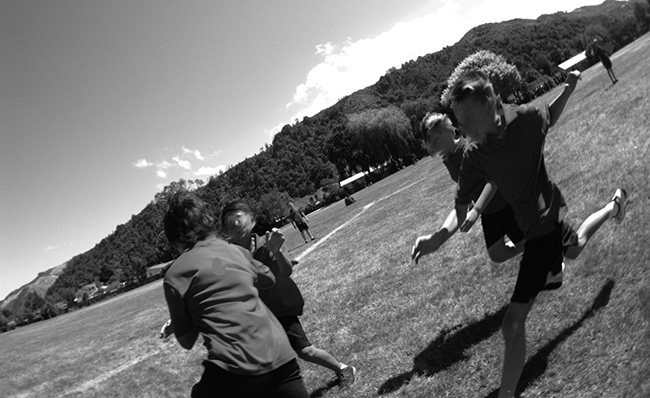 Thursday 7 December 2017 2:44pm
Thursday 7 December 2017 2:44pm
University of Otago's Kids'Cam study has found inadequate sun protection measures for NZ kids.
Many children may not be sun-safe during school lunch breaks, research from the University of Otago, Wellington, reveals.
The study observed nearly 1300 children from eight randomly selected primary and intermediate schools in the Wellington region over school terms 1 and 4. It found that only 21% of students wore a sun protective hat (bucket, broad-brim or legionnaire styles) while outdoors at lunchtime, and only 22% were under the shade available.
Lead researcher Ryan Gage, says the study provides further evidence of the need to ensure sun protection in New Zealand schools.
“Our findings suggest that children may be less sun-safe in school grounds than previously believed,” says Gage. “Although most schools had a 'no hat, no play' policy, few students actually wore hats.”
New Zealand currently has the highest rate of melanoma skin cancer in the world. Each year, nearly 70,000 skin cancers are diagnosed and 500 New Zealanders die from skin cancer.
“Finding ways of improving children's sun protection in schools is crucial,” says Gage's co-researcher, Associate Professor Louise Signal. “Between September and April, the sun in New Zealand is often strong enough to cause skin damage. Children spend much of this time in school grounds, and, according to our study, are doing so without sufficient protection.”
The researchers say that comprehensive approaches to improve sun protection should be encouraged, including the provision of school hats, sun-protective uniforms, and the construction of effective shade.
The research was published in the journal Health Education and Behavior and reports on an ancillary study of the Kids'Cam Study, which examined the world in which children live through the lens of wearable cameras.
Note: The study, Kids'Cam, is a world first. The researchers used automated wearable cameras and GPS units to study the children's world. 168 randomly selected children between the ages of 11 and 13 from 16 randomly selected schools in the Wellington region, took part in the study, wearing the devices which recorded photos every seven seconds and locations every five seconds over four days.
For further information, contact:
Associate Professor Louise Signal
Department of Public Health
University of Otago, Wellington
Email louise.signal@otago.ac.nz
Lead researcher Ryan Gage
Department of Public Health
University of Otago
Email ryan.gage@otago.ac.nz
A list of Otago experts available for media comment is available elsewhere on this website.
Electronic addresses (including email accounts, instant messaging services, or telephone accounts) published on this page are for the sole purpose of contact with the individuals concerned, in their capacity as officers, employees or students of the University of Otago, or their respective organisation. Publication of any such electronic address is not to be taken as consent to receive unsolicited commercial electronic messages by the address holder.
